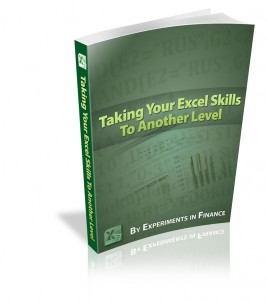
For me, coming from a science background and being an introvert to begin with, the biggest eye-opener and the hardest thing to overcome was to accept that I needed to sell myself to employers and enhance my skills and experience on my resume. Here are two common mistakes and their solutions that I learned about resume writing while in business school:
Cater your resume for the position. Don’t make the mistake of creating a one-size-fits-all resume. So many people think that once you’ve put all your work experience on a piece of paper, you’re done. Nothing could be further from the truth, especially in this age of keyword-scanning software. In order to write an effective resume, you must research the positions you’re applying for. Gone are the days when you could mass mail your resume and a generic cover letter in the hope of getting bites from employers. For example, if you’re applying to a position in the marketing department as opposed to finance, you should probably change the emphases on some of your bullet points before sending out your resume.
Example: Let’s say you worked on a project in which your interaction with customers resulted in an improvement to the bottom line of the department. If you’re applying to a finance position, you might emphasize the “25% increase in ROI” you achieved, whereas if you’re applying to a job in the marketing department, they might be more interested how you “developed innovative customer satisfaction surveys” that resulted in such an increase.
Make your resume stand out by using the CAR method: Context, Action, Results. Once you’ve identified the sorts of skills required in the position you’re seeking, present them in the right way by putting yourself in the position of the employer. What is he or she looking for?
Too many resumes out there are written too vaguely when it comes to showing off your skills and accomplishments. Think about it: businesses for the most part focus on the bottom line: results. Why not make your resume do the same? By the way, “CAR” is just a mnemonic. ACR, RCA, whichever order works best for your bullet point is fine, and try to use them all so your resume doesn’t sound stale and repetitive.
Context: This gives the employer the background information about your accomplishment. Did you do it while undergoing a period of high-growth? Was the department undergoing lots of change? If your accomplishment was part of a project, how big was it? How long did it take? You get the idea. If there was some sort of unusual situation or demand, be sure to mention it.
Action: Explain the action you took, being sure to use action verbs like led, managed, created, developed, etc. What specifics did YOU do, as opposed to people on your team? (As much as I hate this aspect because I find it somewhat silly, many employers out there want to know what you specifically contributed, nevermind if the project couldn’t have been accomplished without a team effort.)
Results: Here’s where you get to hit the ball home. How did what you did benefit the company? Be sure to quantify it as much as possible. Did it result in a 25% increase in ROI? An absolute $5M savings? Did you receive a meaningful award for your accomplishment? (If so, be sure to describe the award, especially in terms of its rarity.) Here’s an example of the process in action:
-
Generic statement: Responsible for getting goods to the customer
Add Action: Delivered perishable goods
Add Context: Delivered perishable goods to key customers in a fast-paced environment
Add Result: Delivered perishable goods to key customers in a fast-paced environment, resulting in return customers and reduced waste
Final revision (one possibility): Improved delivery process of perishable goods to key customers in a fast-paced environment, resulting in a 50% increase in return customers and an annual savings of $1M from reduced waste
Compare the final revision with the original, generic statement. Can you see the difference? As a stranger, you get a much better sense of the role of the candidate, what he did, and the benefits in which his actions resulted. Remember, at each step, break down all the actions you took and see if there’s anything of more value that you can add to your bullet point, especially as it relates to the position you’re applying for.
I try to remind myself that resume writing as being part of “the system” whose rules you must learn in order to be successful, kind of like a game. With practice and over time, it becomes easier and easier to do. Reality is that there are probably lots of people applying for the position you’re interested in, and the more you can make yourself stand out (within the boundaries of honesty), the better your chances become.
***************************************************
Look Good at Work and Become Indispensable Become an Excel Pro and Impress Your Boss

***************************************************


Resume writing tactics: the nitty-gritty steps | Experiments in Finance
[…] Here’s a follow-up to my earlier post on avoiding two big resume pitfalls. Now that you know what to do, how do you actually get there? I’ll share my process, which some might find useful and others aggravating. I find it a practical approach. (Note that this process is for applying to US jobs…jobs in foreign countries tend to have requirements not covered here.) […]
orchidophile
Great tips. You are right: the days of the mass mailing are gone. But a cover letter template with removable body paragraphs and bullets can still move mountains!
Mapgirl’s Fiscal Challenge / Articles I liked this week
[…] Ricemutt on improving your resume. Excellent advice. Always be specific and quantifiable if you can. If you saved your company $3 million dollars, then say that. […]